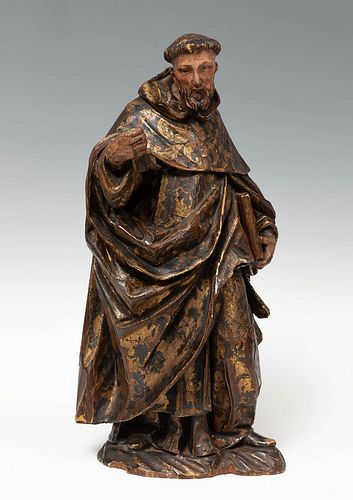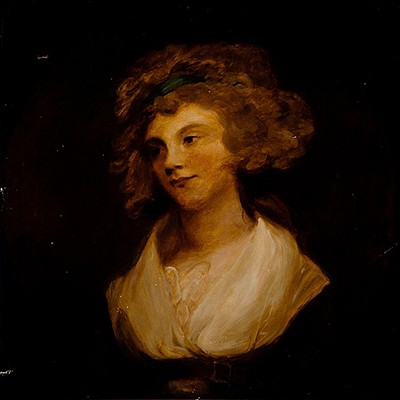Andalusian School; first half of the seventeenth century. "Saint John of the Cross". Carved and polychrome wood.
About Seller
Carrer Aragó 346
Barcelona
Spain
Setdart Subastas was born in 2004 and is currently the first online art auction in Spain with solidity, prestige and reliability guaranteed by our more than 60,000 users. Setdart has a young, dynamic and enterprising team ready to successfully manage the purchase and sale of art works through custom...Read more
Two ways to bid:
- Leave a max absentee bid and the platform will bid on your behalf up to your maximum bid during the live auction.
- Bid live during the auction and your bids will be submitted real-time to the auctioneer.
Bid Increments
| Price | Bid Increment |
|---|---|
| EUR€0 | EUR€10 |
| EUR€200 | EUR€25 |
| EUR€500 | EUR€50 |
| EUR€1,000 | EUR€100 |
| EUR€3,000 | EUR€200 |
| EUR€5,000 | EUR€500 |
| EUR€10,000 | EUR€1,000 |
| EUR€20,000 | EUR€2,000 |
| EUR€50,000 | EUR€5,000 |
About Auction
Nov 25, 2021
Setdart Auction House sofia@setdart.com
- Lot Description
Andalusian School; first half of the seventeenth century. "Saint John of the Cross". Carved and polychrome wood. It has slight flaws in the table and lost polychrome. Measurements: 22 x17 cm. This sculpture is defined by the great volumetric game that the sculptor has managed to capture, through the folds of the tunic of the protagonist. This feature combines the volumetric characteristic of the work, with an exacerbated movement, which provides a great dynamism. Although the religious figure has lost his attributes, he can be identified as Juan de Yepes known as San Juan de la Cruz (1542-1591) was a mystic and religious poet, whose experiences are inscribed in the close circle of Santa Teresa de la Cruz. Together with the saint he founded the order of the Discalced Carmelites. In his early days he worked as a teacher at the novitiate college of Mancera, and later founded the college of Alcalá de Henares, a prominent place due to the university founded by Cisneros, where theology studies were taught. He later became the confessor of the monastery of Santa Teresa. In 1577 he was imprisoned because of his confrontation with the order of the Carmelitas Calzadas, however, he managed to escape from prison and move to Andalusia where he lived the rest of his days. Given the importance given to religious images in the Hispanic world, during the 17th and 18th centuries ambitious pictorial series and extensive iconographic programs were created for churches and convents, as well as printed prints, medals and reliquaries for private devotion. As a whole, regardless of their size or support, these images fulfilled the objective of sacralizing daily life beyond the altars. The Granada school stood out during this period, receiving and developing the stylistic patterns of the Baroque. It is evident the leading role played by the Andalusian school of sculpture during the period that has been called the Golden Age; to it belong a series of masters of unquestionable value who knew how to combine in their works the extraordinary technical quality and religious depth, in accordance with the atmosphere of their time, fully connected with the tastes of the clientele, more interested in the work of religious themes than in the commissions of profane character, thus marking a substantial difference with respect to the production of other European countries. It is also worth mentioning that the economic development and the strength that Seville experienced after the Discovery of America, having become the gateway and port of the Indies, was quickly reflected in art; from the first decades of the century, masters of different origins began to visit the city constantly in search of the American market and the potential Sevillian clientele, increasingly attracted by the new artistic forms arriving from Italy.
Dimensions:
INV Number:
22 x17 cm.
35121913 - Shipping Info
-
In-house shipping available. Please inquire at admin@setdart.com.
-
- Buyer's Premium



 EUR
EUR CAD
CAD AUD
AUD GBP
GBP MXN
MXN HKD
HKD CNY
CNY MYR
MYR SEK
SEK SGD
SGD CHF
CHF THB
THB

















